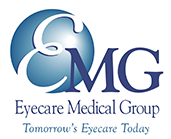
Did you know that November is Diabetic Eye Disease Awareness Month? Millions of Americans live with diabetes.
Many people can live long and fulfilling lives by managing their diabetes and staying healthy. But one thing everyone who has diabetes or is at high risk for diabetes should remain aware of is the potential for certain eye conditions.
Diabetes can affect your eye health, and it’s essential to know ways to manage your risk and have any issues diagnosed early. Awareness of diabetic eye disease can save your vision! Keep reading to learn more about Diabetic Eye Disease Awareness Month!
Diabetic Eye Diseases
Several eye conditions are linked to diabetes. Having diabetes increases your risk of developing cataracts and glaucoma.
Cataracts are common and can be removed through cataract surgery, but glaucoma has no cure. You can manage it, but if you suffer any vision loss from glaucoma, it’s irreversible. That’s why it’s necessary to receive an early diagnosis and undergo treatment before you experience any vision loss.
But the primary eye disease that’s linked to diabetes is diabetic retinopathy. Diabetic retinopathy is an eye condition that’s caused by high blood sugar levels.
Sugar in the blood can block off the blood vessels on your retina, causing them to swell, leak, and generate more blood vessels to grow abnormally. This damages your retina, and that damage can cause irreversible vision loss.
Both glaucoma and diabetic retinopathy present no symptoms before causing irreversible vision loss. The only way to save your vision is to have regular eye exams to detect them early and treat these diseases to slow further damage to your eyes.
Assessing Your Risk
If you have diabetes, you should have annual eye exams. You should also consider seeing an eye doctor more frequently if you’re at high risk for diabetes. Regardless of whether or not you have diabetes, you should see an eye doctor yearly by the time you’re 60.
There are a few factors that can increase your risk for diabetes and diabetic eye disease. These include:
- Being African American, Hispanic, or Native American
- Being over 60
- Having high blood pressure
- Having high cholesterol
- Tobacco use
- Having unmanaged diabetes or consistently high blood sugar
- Having diabetes for a long time
If you exhibit any of these risk factors, talk to your doctor and eye doctor about your eye health and how often you should have your eyes examined.
Prevention and Treatment
There’s no way to prevent diabetic eye disease, but you can lower your risk. You can’t control certain factors, but you can control how well you manage your blood sugar.
Having your diabetes managed is the best way to lower your risk for diabetic eye disease. You can also quit smoking and lead a healthy lifestyle by staying active and eating a balanced diet.
If you are diagnosed with diabetic eye disease, there are treatments. But treatment is most effective before you’ve experienced vision loss.
Diabetic retinopathy and glaucoma cannot be cured, but you can slow their progress and prevent vision loss through various treatment methods, like medication and surgery.
The best thing you can do to preserve your vision is to be aware of your risks and have regular eye exams accordingly.
Have more questions about diabetic eye diseases? Schedule an appointment at Eyecare Medical Group in Portland, ME, to learn more!





